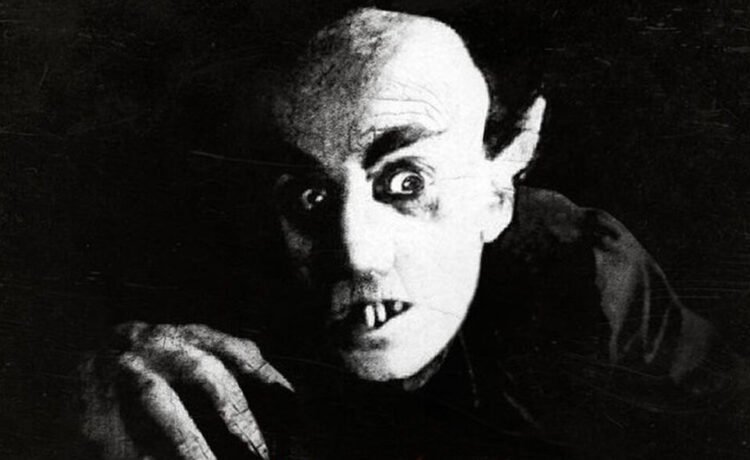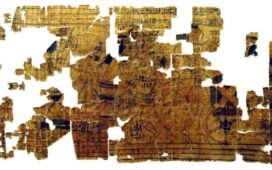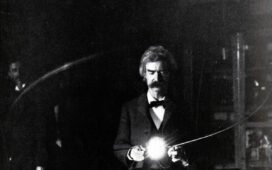F. W. Murnau’s Nosferatu, far and away the most influential early vampire movie, came out 102 years ago. For about ten of those years, Robert Eggers has been trying to remake it. He wouldn’t be the first: Werner Herzog cast Klaus Kinski as the blood-sucking aristocrat at the center of his own version in 1979, and, though not a remake, E. Elias Merhige’s Shadow of the Vampire, from 2000, brought fresh attention to Murnau’s Nosferatu by grotesquely fictionalizing its production. In the latter picture, Willem Dafoe plays Max Schreck, the actor who took on the original role of the Dracula-inspired Count Orlok, as an actual vampire.
Dafoe changes sides in Eggers’ Nosferatu, due out this Christmas (see trailer below), by appearing as a vampire hunter. Playing Count Orlok is Bill Skarsgård, sure to be unrecognizable in full costume and makeup. “This Orlok is more of a folk vampire than any other film version,” says Eggers in a recent Vanity Fair interview. “That means he’s a dead person. And he’s not like, ‘I look great and I’m dead.’ ” What’s more, “for the first time in a Dracula or Nosferatu story, this guy looks like a dead Transylvanian nobleman. Every single thing he’s wearing down to the heels on his shoes is what he would’ve worn.” And lest any viewer with knowledge of ancient Romanian culture accuse the film of blithe inaccuracy, he also speaks a version of the extinct Dacian language.
This attention to detail will come as no surprise to fans of Eggers, who’s made his name with the historical films The Witch, The Lighthouse, and The Northman, all praised for their distinctive folkloric textures. But with Nosferatu, he pays direct homage to what’s presumably one of the major influences on his cinematic style. “The version that I watched as a kid didn’t have music,” he remembers. “It might not have had the same impact if it had had a cheesy organ score or synth score.” The video he watched was “a degraded 16-millimeter print” that had “certain frames where Max Schreck’s eyes looked like cat eyes. It’s the version that gave rise to the legends of Max Schreck actually being a vampire.”
Growing up in the rural New Hampshire of the nineties, Eggers’ interest in seeing Nosferatu meant that he “had to drive to the town that was populated and had a video store to order it, and then it came in the mail a month and a half later.” Today, we can watch it whenever we like, free online, and if you happen never to have seen it, you should certainly do so before catching the new remake. If reactions to early screenings are anything to judge by, this new interpretation of the material more than stands on its own dead, accurately heeled feet. But as Eggers surely understands better than anyone, you can’t approach the dankly seductive realm of Count Orlok without also being pulled back into cinema history.
Related content:
10 Great German Expressionist Films: Nosferatu, The Cabinet of Dr. Caligari & More
Horror Legend Christopher Lee Reads Bram Stoker’s Dracula
101 Free Silent Films: The Great Classics
Based in Seoul, Colin Marshall writes and broadcasts on cities, language, and culture. His projects include the Substack newsletter Books on Cities and the book The Stateless City: a Walk through 21st-Century Los Angeles. Follow him on Twitter at @colinmarshall or on Facebook.















